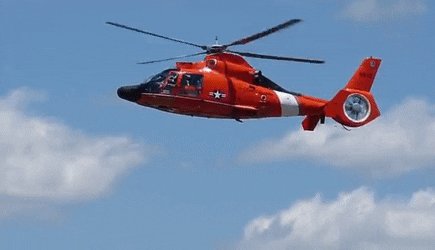ఫస్ట్ ఎయిడ్ First aid ACTION AT AN EMERGENCY
Once an area has been made safe, use the
primary survey to quickly carry out
an initial assessment of the casualty or
casualties to establish treatment priorities. If
there is more than one casualty, attend to those
with life-threatening conditions first. If possible,
treat casualties in the position in which you find
them; move them only if they are in immediate
danger or if it is necessary for you to be able to
provide life-saving treatment.
Enlist help from others if possible. Ask
bystanders to call for the emergency services
. They can also help to protect a casualty’s
privacy, put out warning triangles in the event
of a vehicle incident or fetch equipment
while you begin first aid.
Hand over any notes you have made to the
emergency services when they arrive .
Answer any questions they may have and follow
any instructions. As a first aider you may be
asked to help, for example, to move a casualty
using specialist equipment. If so, you should
always follow their instructions.
HELICOPTER RESCUE
Occasionally, helicopter rescue is required. If a
casualty is being rescued in this way, there are a
number of safety rules to follow. The emergency
services may already be in attendance, in which
case you should keep clear unless they give you
specific instructions.
If the emergency services are not in
attendance, it is important to keep bystanders
clear. Make sure everyone is at least 50m (55yd)
away from the landing site, and that no-one is
smoking. Kneel down as the helicopter
approaches, keeping well away from the rotor
blades. Once the helicopter has landed do not
approach it. Keep bystanders back and wait for
a member of the crew to approach you.
Begin treatment
Start life-saving
first aid as soon as
possible. Ask others to
call for help and fetch
equipment such as an
AED (automated external
defibrillator).
ఎమర్జెన్సీలో ప్రథమ చికిత్స చర్య
ఒక ప్రాంతం సురక్షితమైన తర్వాత, ఉపయోగించండి
త్వరగా నిర్వహించడానికి ప్రాథమిక సర్వే
ప్రమాదానికి సంబంధించిన ప్రాధమిక అంచనా లేదా
చికిత్స ప్రాధాన్యతలను స్థాపించడానికి ప్రాణనష్టం. ఉంటే
ఒకటి కంటే ఎక్కువ ప్రమాదాలు ఉన్నాయి, వారికి హాజరు
మొదట ప్రాణాంతక పరిస్థితులతో. వీలైతే,
మీరు కనుగొన్న స్థితిలో ప్రాణనష్టానికి చికిత్స చేయండి
వాటిని; వారు వెంటనే ఉంటేనే వాటిని తరలించండి
ప్రమాదం లేదా మీరు చేయగలిగే అవసరం ఉంటే
ప్రాణాలను రక్షించే చికిత్సను అందించండి.
వీలైతే ఇతరుల సహాయాన్ని నమోదు చేయండి. అడగండి
అత్యవసర సేవలకు పిలుపునిచ్చే ప్రేక్షకులు
. ప్రమాదంలో ఉన్నవారిని రక్షించడానికి కూడా ఇవి సహాయపడతాయి
గోప్యత, ఈవెంట్లో హెచ్చరిక త్రిభుజాలను ఉంచండి
వాహన సంఘటన లేదా పరికరాలను పొందడం
మీరు ప్రథమ చికిత్స ప్రారంభించినప్పుడు.
మీరు చేసిన ఏదైనా గమనికలను అప్పగించండి
వారు వచ్చినప్పుడు అత్యవసర సేవలు.
వారు వేసే ఏవైనా ప్రశ్నలకు సమాధానం ఇవ్వండి మరియు ఏదైనా సూచనలు.అనుసరించండి
మొదటి సహాయకుడిగా మీరు ఉండవచ్చు
ఉదాహరణకు, ప్రమాదవశాత్తు తరలించడానికి సహాయం చేయమని అడిగారు
ప్రత్యేక పరికరాలను ఉపయోగించడం. అలా అయితే, మీరు తప్పక
ఎల్లప్పుడూ వారి సూచనలను అనుసరించండి.
హెలికాప్టర్ రెస్క్యూ
అప్పుడప్పుడు, హెలికాప్టర్ రెస్క్యూ అవసరం. ఉంటేప్రమాదవశాత్తు ఈ విధంగా రక్షించబడుతోంది,
a
అనుసరించాల్సిన భద్రతా నియమాల సంఖ్య. అత్యవసర పరిస్థితి
సేవలు ఇప్పటికే హాజరు కావచ్చు, దీనిలో
వారు మీకు ఇవ్వకపోతే మీరు స్పష్టంగా ఉంచాలి
నిర్దిష్ట సూచనలు.
అత్యవసర సేవలు లేకపోతే
హాజరు, ప్రేక్షకులను క్లియర్. ఉంచడం చాలా ముఖ్యం
ప్రతి ఒక్కరూ కనీసం 50 మీ (55 ఐడి) ఉన్నారని నిర్ధారించుకోండి
హెలికాప్టర్ల్యాండింగ్ సైట్ నుండి దూరంగా, మరియు ఎవరూ లేకుండా
ధూమపానం.చేయకుండా బ్లేడ్లు.రోటర్ నుండి బాగా దూరంగా ఉండాలి
హెలికాప్టర్ దిగిన తర్వాత వెళ్లవద్దు
దానినుండి ప్రేక్షకులను వెనుకకు ఉంచండి మరియు వేచి ఉండండి
మిమ్మల్ని సంప్రదించడానికి సిబ్బంది సభ్యుడు వచ్ఛే వరకు ఆగండి
చికిత్స ప్రారంభించండి
ప్రాణాలను రక్షించడం ప్రారంభించండి
ప్రథమ చికిత్స వెంటనే సాధ్యం. ఇతరులను అడగండి
సహాయం కోసం కాల్ చేయండి మరియు పొందండి
AED (ఆటోమేటెడ్ బాహ్య డీఫిబ్రిలేటర్).వంటి పరికరాలు

No comments:
Post a Comment